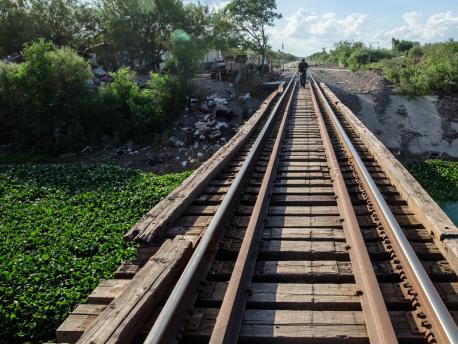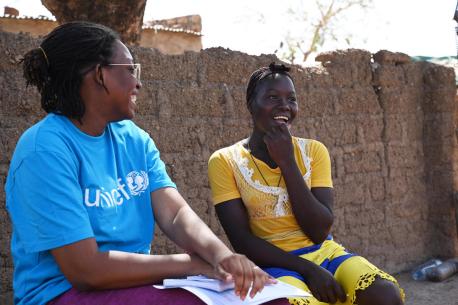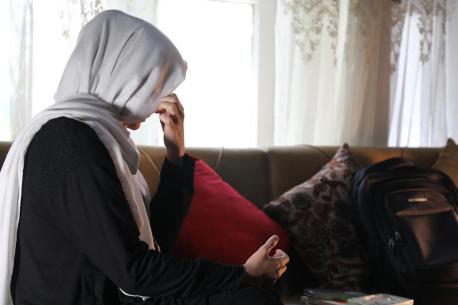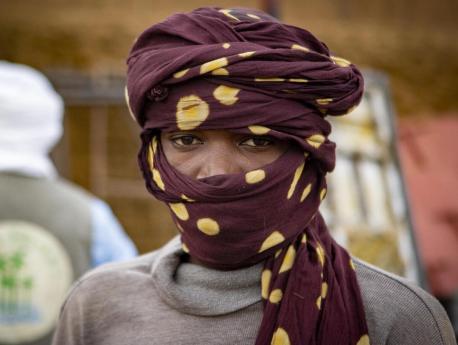
UNICEF and the Fight Against Child Trafficking
What is child trafficking?
Child trafficking is the recruitment, transportation, transfer, harboring or receipt of children through deception, fraud or force with the aim of exploiting them for profit.
Anyone — regardless of class, gender, age and background — can become a victim of child trafficking.
Common forms of child trafficking include forced marriage, begging, sweatshop labor, pornography, migrant farming, domestic labor, sex tourism and recruitment to armed groups.
Desperate families and children often feel they have no other choice but to leave their homes and communities or take other measures to survive — increasing trafficking risks.
Child traffickers often use violence or lies to coerce victims. They set up fraudulent employment agencies or make false promises of jobs or education opportunities.
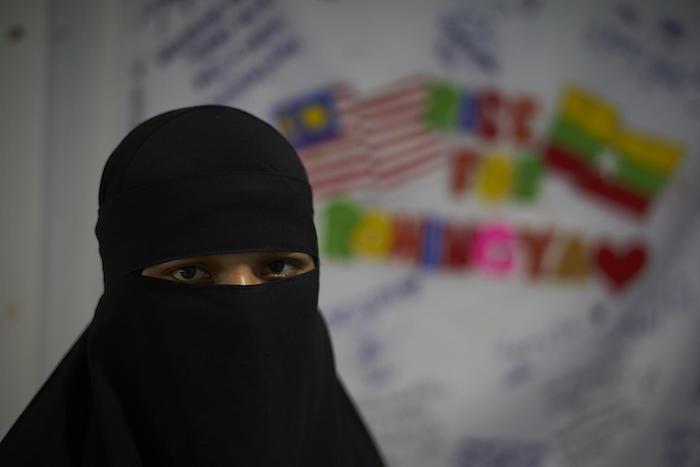
Sixteen-year-old Meena and her mother and sisters fled Myanmar after their father was murdered by the Myanmar military. They took a boat with hundreds of other Rohingya refugees. When the boat stopped in Thailand, traffickers tried to sell the younger girls for profit. Though Meena, then 12 years old, was saved from the traffickers, she became a victim of child marriage when her to-be husband purchased her. She is now 16 and stays with her three-year-old son and her husband in an apartment in Kuala Lumpur. ©UNICEF/UN0248091/Noorani
How common is child trafficking?
Child trafficking takes place in every country in the world. One-third of all human trafficking victims worldwide are children.
In the United States, it has been reported in all 50 U.S. states, with particularly high rates in California, Florida, New York, Ohio and Texas.
While many victims remain uncounted — making it difficult to determine how many children in the world are trafficked — human trafficking and forced labor generate an estimated $150 billion in annual profits.
UNICEF found that an estimated 5.7 million children are living in forced marriages. According to the International Labor Organization, 10 million children are forced into modern slavery through forced labor.
How are girls impacted by child trafficking?
Girls are twice as likely to be victims of child trafficking, especially for sexual exploitation, including prostitution and forced child marriage.
Gender inequality and child trafficking often reinforce each other. Girls who are victims of child trafficking are not able to receive an education. At the same time, girls who do not receive an education are often more vulnerable to child trafficking.
Children fleeing war in Ukraine face heightened risk of child trafficking
Child refugees and migrants are especially at risk of trafficking and other forms of exploitation and abuse. This includes children who have fled the war in Ukraine.
UNICEF is working to ensure children who have fled Ukraine are protected and supported by building safe shelters for children and women set up along the neighboring countries of Ukraine. These UNICEF-UNHCR Blue Dots provide information and guidance to refugee families; children who are unaccompanied by a parent or caregiver — making them more vulnerable to traffickig — are identified and provided with protection services.
UNICEF is also working with partners to urge governments to strengthen screening to identify at-risk children, while calling on increased collaboration and communication between border control, law enforcement and child protection authorities to identify separated children as quickly as possible and implement family tracing and reunification for children separated from their caregivers.
History of UNICEF’s dedication to preventing child trafficking
UNICEF is committed to ending child trafficking, supporting victims, and addressing the risk factors that make children more vulnerable to becoming victims — including poverty, discrimination and lack of opportunity to pursue an education.
UNICEF’s efforts worldwide include lobbying governments and partners to pass laws and strengthen child protection systems to better prevent and respond to violence and abuse. UNICEF USA supported the Trafficking Victims Protection Act, which Congress passed in 2000 and has since been reauthorized several times.
Other strategies include:
- advocating for legal birth registration for all newborns, which helps reduce future risks of exploitation and abuse
- partnering with communities and organizations to change societal norms that can make children more vulnerable to exploitation
- providing training in how to identify and stop trafficking for social workers, health workers, police, border officials and other professionals who work with children
- supporting parents with humanitarian cash transfers so that their children are not forced to work and are able to receive an education
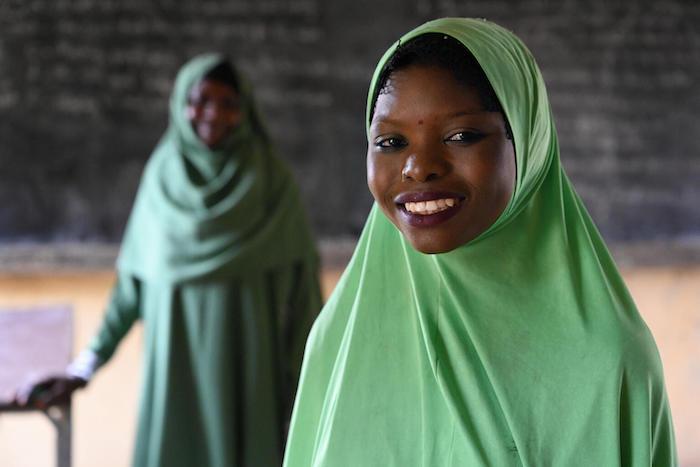
Fati, a 14-year-old girl in Diffa, in the southeast of Niger, is attending a UNICEF-funded project to support the enrollment and retention of girls through mentoring to promote good practices and the abandonment of child marriage. ©UNICEF/UN0684372/Dejongh
What to do if you suspect child trafficking?
If you suspect someone is being trafficked, or are concerned about a situation's potential for human trafficking, call the National Human Trafficking Hotline toll-free at 1-888-373-7888, text 233733, or reach out via web chat. Trained advocates and responders are available through this hotline 24 hours a day, seven days a week.
Report a missing child or child pornography to the National Center for Missing and Exploited Children (NCMEC) by calling 1-800-THE-LOST (843-5678) or through the Cybertipline.
How you can help
Here’s how you can take action today to be a part of the solution to end child trafficking:
- email your local elected officials to urge them to prioritize addressing child trafficking
- join UNICEF UNITE, and become a front-line advocate in the U.S. to fight for children’s rights worldwide
- share this article or information about child trafficking on your social media accounts with the hashtag #EndTrafficking
- donate to support UNICEF's work around the world
Learn more
Helping Survivors of Child Trafficking Get Their Lives Back
Children in desperate circumstances crossing borders alone seeking a better future are vulnerable to child traffickers. UNICEF works to help these children safely reunite with their families.
Child Trafficking Hits Close to Home
Children are bought and sold in every corner of the world, including all 50 states of the U.S. Here's more about how UNICEF is supporting efforts to end child trafficking in the U.S.
Help UNICEF protect vulnerable children around the world. Donate today.
HOW TO HELP
There are many ways to make a difference
War, famine, poverty, natural disasters — threats to the world's children keep coming. But UNICEF won't stop working to keep children healthy and safe.
UNICEF works in over 190 countries and territories — more places than any other children's organization. UNICEF has the world's largest humanitarian warehouse and, when disaster strikes, can get supplies almost anywhere within 72 hours. Constantly innovating, always advocating for a better world for children, UNICEF works to ensure that every child can grow up healthy, educated, protected and respected.
Would you like to help give all children the opportunity to reach their full potential? There are many ways to get involved.



